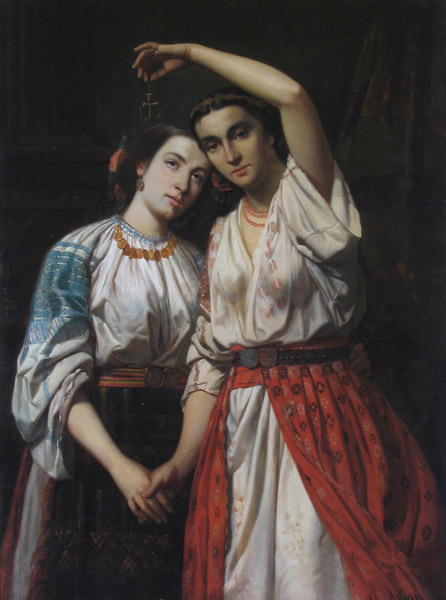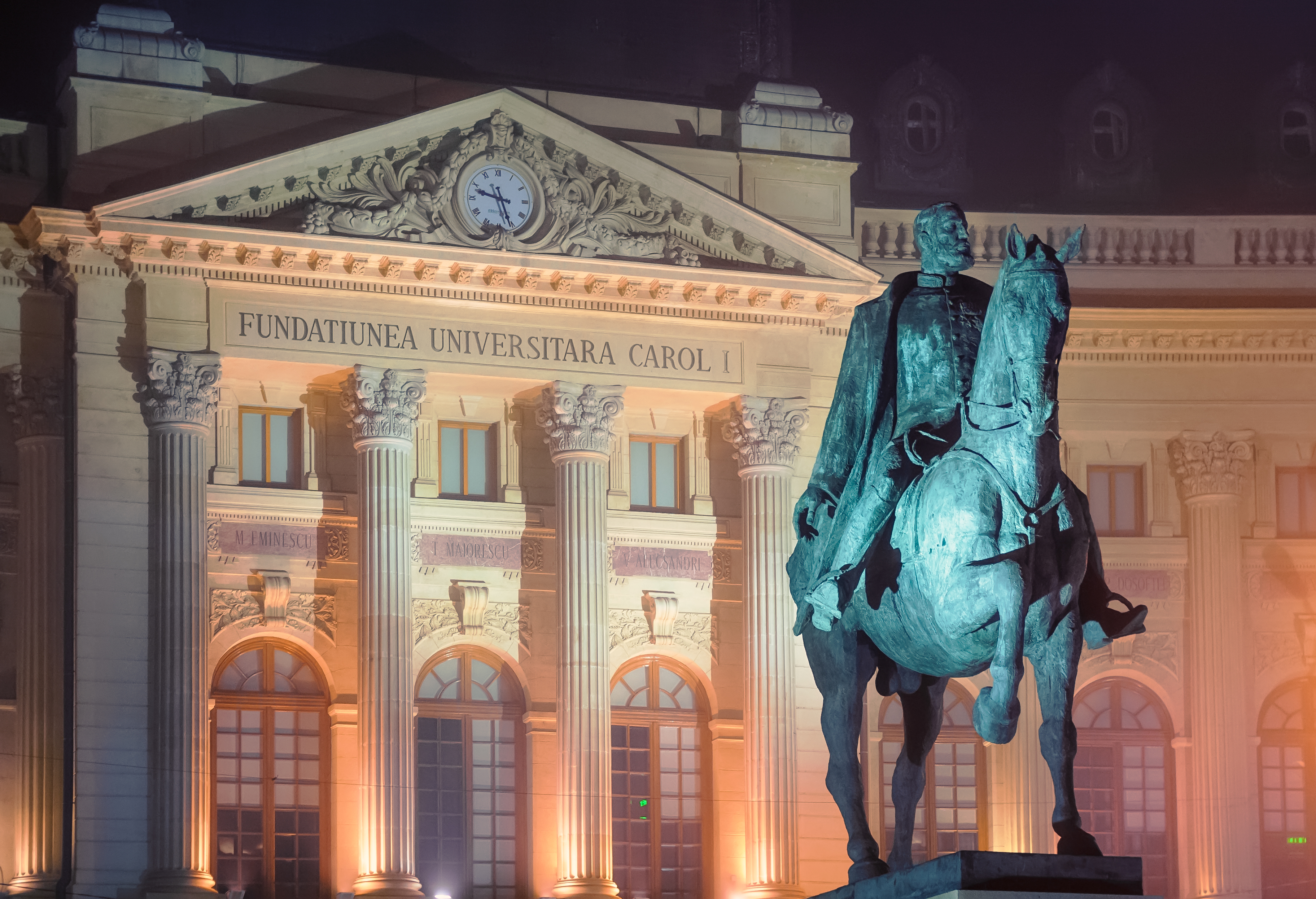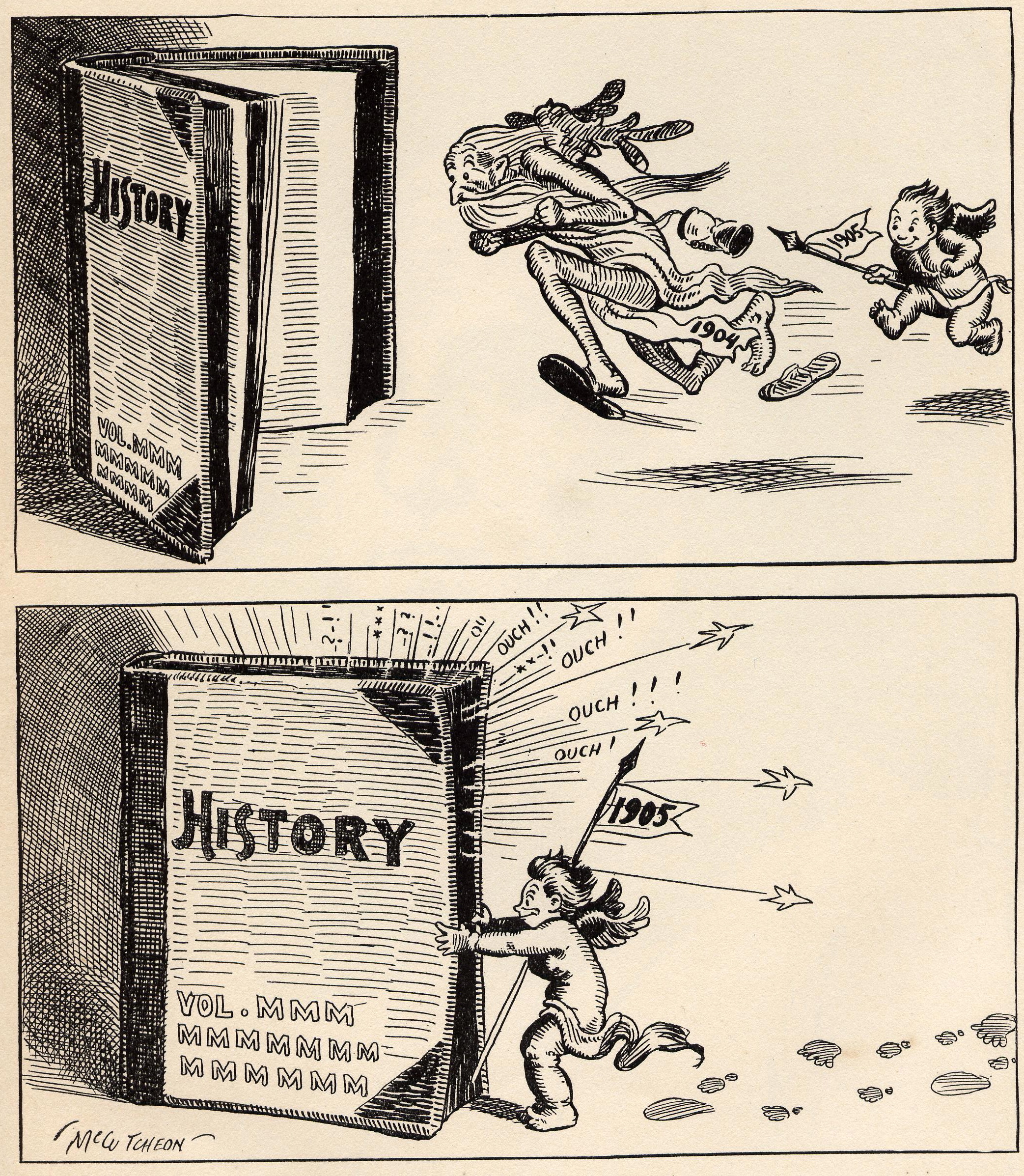|
Virgil Huzum
Virgil Huzum (born Virgiliu Huzum; December 12, 1905–July 7, 1987) was a Romanian poet. Born in Ianca, Brăila County, his parents were Ion Huzum, a pharmacist, and Clara (''née'' Andoniu). He attended primary school in Darabani and Focșani, and went to Unirea High School in the latter town. While a student, he published verses in ''Anuarul Societății literare a Liceului "Unirea"''; he graduated in 1923. He studied pharmacy and obtained a degree in literature and philosophy from the University of Bucharest in 1931. He made his adult publication debut in 1924 in ''Adevărul literar și artistic''. Huzum's first published book was the 1926 ''À la manière de....'', a collection of poetic parodies and pastiches. This was followed by short collections of verse: ''Bolta bizantină'' (1929), ''Zenit'' (1936), ''Mirajul sunetelor'' (1973). Among the magazines to which he contributed were '' Bilete de Papagal'', ''Vremea'', ''Viața literară'', ''Zodiac'' and ''Viața Româneasc ... [...More Info...] [...Related Items...] OR: [Wikipedia] [Google] [Baidu] |
Romania
Romania is a country located at the crossroads of Central Europe, Central, Eastern Europe, Eastern and Southeast Europe. It borders Ukraine to the north and east, Hungary to the west, Serbia to the southwest, Bulgaria to the south, Moldova to the east, and the Black Sea to the southeast. It has a mainly continental climate, and an area of with a population of 19 million people. Romania is the List of European countries by area, twelfth-largest country in Europe and the List of European Union member states by population, sixth-most populous member state of the European Union. Europe's second-longest river, the Danube, empties into the Danube Delta in the southeast of the country. The Carpathian Mountains cross Romania from the north to the southwest and include Moldoveanu Peak, at an altitude of . Bucharest is the country's Bucharest metropolitan area, largest urban area and Economy of Romania, financial centre. Other major urban centers, urban areas include Cluj-Napoca, Timiș ... [...More Info...] [...Related Items...] OR: [Wikipedia] [Google] [Baidu] |
Ianca
Ianca () is a town in Brăila County, Muntenia, Romania. With a population of 8,969 people as of 2021, it is the second-largest urban locality in the county. The town's area is , of which have the status of residential area. The town administers six villages: Berlești, Gara Ianca, Oprișenești, Perișoru, Plopu, and Târlele Filiu. Geography The town is situated at the northern edge of the Bărăgan Plain, at an altitude of . It is located in the central part of the county, southwest of the county seat, Brăila. History The first mention of the settlement dates to 1834. At the end of the 19th century, it comprised two villages (Ianca and Niculești); with a population of 1,483, it was the residence of Plasă, plasa Ianca of Brăila County. In 1950, Ianca commune became part of the Făurei raion of . It became again part of Brăila County in 1968, and it officially became a town in 1989, as a result of the Romanian rural systematization program. From 1941 to 2001 Ianca was ... [...More Info...] [...Related Items...] OR: [Wikipedia] [Google] [Baidu] |
Brăila County
Brăila County () is a county (județ) of Romania, in Muntenia, with the capital city at Brăila. Demographics At the 2021 Romanian census, Brăila County had a population of 281,452 (172,533 people in urban areas and 108,919 people in rural areas.) and the population density was . * Romanians – 98% * Romani people, Romani, Russians, Lipovans, Aromanians, and Minorities of Romania, others - 2% Geography This county has a total area of . All the county lies on a flat plane: the Bărăgan Plain, one of the best areas for growing cereals in Romania. On the east side there is the Danube, which forms an island – the Great Brăila Island –surrounded by the Măcin channel, Cremenea channel, and Vâlciu channel. On the northern side there is the Siret (river), Siret River and on the north-western side there is the Buzău (river), Buzău River. Neighbours * Tulcea County in the east. * Buzău County in the west. * Galați County and Vrancea County in the north. * Ialo ... [...More Info...] [...Related Items...] OR: [Wikipedia] [Google] [Baidu] |
Darabani
Darabani () is a town in Botoșani County, Western Moldavia, Romania, and is the northernmost town in Romania. It administers three villages: Bajura, Eșanca, and Lișmănița. The town lies on the right bank of the river Prut, close to the triple border between Romania, Ukraine, and Moldova. The area is a setting for the 2019 Amazon Studios TV series '' Hanna'' and plays a significant role in the development of the titular character from that series. Natives * Leon Dănăilă (born 1933), neurosurgeon, author, and politician * Marieta Ilcu (born 1962), long jumper *Gheorghe Moroșanu Gheorghe Moroșanu (born April 30, 1950, in Darabani, Botoșani County, Romania) is a Romanian mathematician known for his works in Ordinary and Partial Differential Equations, Nonlinear Analysis, Calculus of Variations, Fluid Mechanics, Asymptot ... (born 1950), mathematician * Ana Maria Savu (born 1990), handballer References Populated places in Botoșani County Localities in W ... [...More Info...] [...Related Items...] OR: [Wikipedia] [Google] [Baidu] |
Focșani
Focșani (; ) is the capital city of Vrancea County in Romania on the banks the river Milcov, in the historical region of Moldavia. , it has a population of 66,719. Geography Focșani lies at the foot of the Curvature Carpathians, at a point of convergence for tectonic geologic faults, which raises the risk of earthquakes in the vicinity. Though Vrancea County is one of the most popular wine-producing regions in Romania, Odobești being just to the northwest, in Romania, Focșani itself is not considered a wine-producing center. The wine sold as ''Weisse von Fokshan'' in Germany and some other European countries is generally a ''Fetească Albă de Odobești'' wine, and practically a second-rated wine which does not comply to the European Union rules of naming the regions of origin of wines. The vicinity is rich in minerals such as iron, copper, coal, and petroleum. The city administers two villages, Mândrești-Moldova and Mândrești-Munteni. Focșani lies within the strate ... [...More Info...] [...Related Items...] OR: [Wikipedia] [Google] [Baidu] |
Unirea National College (Focșani)
__NOTOC__ Unirea National College Unirea National College () is a high school located at 15 Cezar Bolliac Street, Focșani, Romania. In 1865, ''Domnitor'' Alexandru Ioan Cuza ordered the establishment of a gymnasium in Focșani, which took place the following January, making it among the country's first such institutions. Within two years, the school had four grades, and the teachers were collecting materials for science, history and geography, as well as old coins. In 1880, work on the first dedicated building began; at the same time, the name changed from Cuza to Unirea, reflecting the association of Focșani with the union of the Principalities. A fifth grade was added in 1884, and the gymnasium soon became a high school. It moved into the new building in 1900. As early as the 1890s, students formed various literary and cultural societies. During World War I, when the area was under German occupation, the school closed and a hospital was set up inside. [...More Info...] [...Related Items...] OR: [Wikipedia] [Google] [Baidu] |
University Of Bucharest
The University of Bucharest (UB) () is a public university, public research university in Bucharest, Romania. It was founded in its current form on by a decree of Prince Alexandru Ioan Cuza to convert the former Princely Academy of Bucharest, Princely Academy into the current University of Bucharest, making it one of the oldest Romanian universities. It is one of the five members of the ''Universitaria Consortium'' (a group of elite Romanian universities). The University of Bucharest offers study programmes in Romanian and English and is classified as an ''advanced research and education university'' by the Ministry of Education and Scientific Research (Romania), Ministry of Education. History The University of Bucharest was founded by the Decree no. 765 of 4 July 1864 by Alexandru Ioan Cuza and is a leading academic centre and a significant point of reference in society. The University of Bucharest is rich in history and has been actively contributing to the development a ... [...More Info...] [...Related Items...] OR: [Wikipedia] [Google] [Baidu] |
Bilete De Papagal
''Bilete de Papagal'' was a Romanian left-wing publication edited by Tudor Arghezi, begun as a daily newspaper and soon after issued as a weekly satirical and literary magazine. It was published at three different intervals: 1928–1930, 1937–1938, 1944–1945. Name The title made reference to a once-popular form of busking and fortune telling, one involving a person playing a barrel organ while a trained parrot would pick up predictions written on scraps of folded paper that were placed in an open box (the notes were known as ''bilete de papagal'' - "parrot tickets"). The use implied a very small format; Arghezi, who later adopted the ''bilet'' as an original form of short prose, explained his style choices in the editorial for the first issue (2 February 1928): "A newspaper this small has never before been published, not even among ants. Lacking a large newspaper in which to write important stupidities, the editor of this rolling paper gives light to what is less than a flyer an ... [...More Info...] [...Related Items...] OR: [Wikipedia] [Google] [Baidu] |
Viața Românească
''Viața Românească'' (, "The Romanian Life") is a monthly literary magazine published in Romania. Formerly the platform of the left-wing traditionalist trend known as poporanism, it is now one of the Writers' Union of Romania's main venues. The magazine, dedicated to literary and scientific issues, was published from March 1906 to August 1916 and from September 1920 to September 1940, first in Iași and then, after 1930, in Bucharest Bucharest ( , ; ) is the capital and largest city of Romania. The metropolis stands on the River Dâmbovița (river), Dâmbovița in south-eastern Romania. Its population is officially estimated at 1.76 million residents within a greater Buc .... The magazine was under the leadership of Constantin Stere (in charge of political content), Paul Bujor and, later, Ioan Cantacuzino (for scientific matters), Garabet Ibrăileanu (until 1933), Mihai Ralea and George Călinescu (for literary matters). Suppressed by the fascist National L ... [...More Info...] [...Related Items...] OR: [Wikipedia] [Google] [Baidu] |
1905 Births
As the second year of the massive Russo-Japanese War begins, more than 100,000 die in the largest world battles of that era, and the war chaos leads to the 1905 Russian Revolution against Nicholas II of Russia (Dmitri Shostakovich, Shostakovich's Symphony No. 11 (Shostakovich), 11th Symphony is subtitled ''The Year 1905'' to commemorate this) and the start of Revolution in the Kingdom of Poland (1905–07), Revolution in the Kingdom of Poland. Canada and the U.S. expand west, with the Alberta and Saskatchewan provinces and the founding of Las Vegas. 1905 is also the year in which Albert Einstein, at this time resident in Bern, publishes his four Annus Mirabilis papers, ''Annus Mirabilis'' papers in ''Annalen der Physik'' (Leipzig) (March 18, May 11, June 30 and September 27), laying the foundations for more than a century's study of theoretical physics. Events January * January 1 – In a major defeat in the Russo-Japanese War, Russian General Anatoly Stessel su ... [...More Info...] [...Related Items...] OR: [Wikipedia] [Google] [Baidu] |
1987 Deaths
Events January * January 1 – Bolivia reintroduces the Boliviano currency. * January 2 – Chadian–Libyan conflict – Battle of Fada: The Military of Chad, Chadian army destroys a Libyan armoured brigade. * January 3 – Afghan leader Mohammad Najibullah says that Afghanistan's 1978 Communist revolution is "not reversible," and that any opposition parties will have to align with Communist goals. * January 4 – ** 1987 Maryland train collision: An Amtrak train en route from Washington, D.C. to Boston collides with Conrail engines at Chase, Maryland, United States, killing 16 people. ** Televangelist Oral Roberts announces to his viewers that unless they donate $8 million to his ministry by March 31, God will "call [him] home." * January 15 – Hu Yaobang, General Secretary of the Chinese Communist Party, is forced into retirement by political conservatives. * January 16 – León Febres Cordero, president of Ecuador, is kidnapped for 11 hours by followers of imprisoned ... [...More Info...] [...Related Items...] OR: [Wikipedia] [Google] [Baidu] |
People From Ianca
The term "the people" refers to the public or common mass of people of a polity. As such it is a concept of human rights law, international law as well as constitutional law, particularly used for claims of popular sovereignty. In contrast, a people is any plurality of persons considered as a whole. Used in politics and law, the term "a people" refers to the collective or community of an ethnic group or nation. Concepts Legal Chapter One, Article One of the Charter of the United Nations states that "peoples" have the right to self-determination. Though the mere status as peoples and the right to self-determination, as for example in the case of Indigenous peoples (''peoples'', as in all groups of indigenous people, not merely all indigenous persons as in ''indigenous people''), does not automatically provide for independent sovereignty and therefore secession. Indeed, judge Ivor Jennings identified the inherent problems in the right of "peoples" to self-determination, as i ... [...More Info...] [...Related Items...] OR: [Wikipedia] [Google] [Baidu] |




